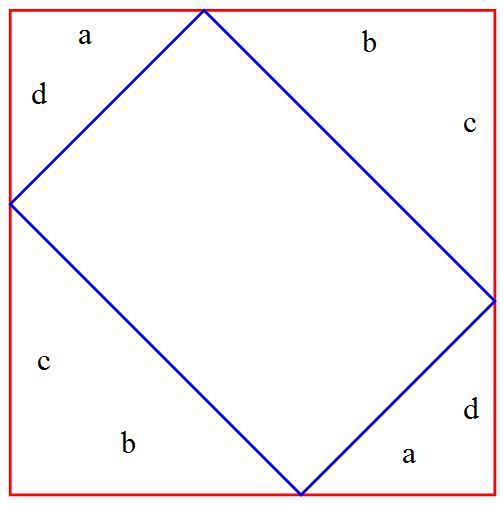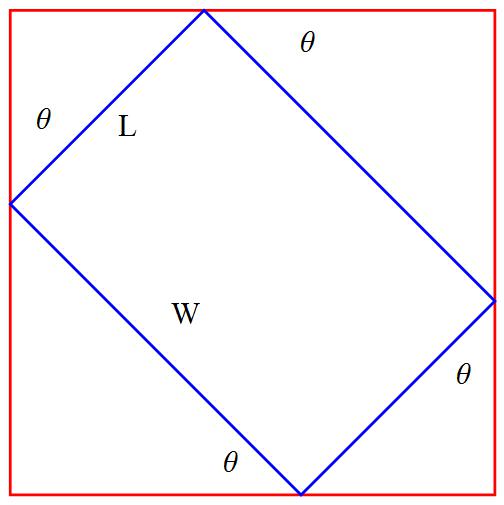What is the maximum area of a rectangle that can be circumscribed about a given rectangle with length L and width W?
3 Answers
Explanation:
Let us set up a concrete scenario...
Start with a rectangle with vertices:
#(L/2, W/2)#
#(-L/2, W/2)#
#(-L/2, -W/2)#
#(L/2, -W/2)#
Rotate it anticlockwise about the origin by
#(L/2 cos theta - W/2 sin theta, W/2 cos theta + L/2 sin theta)#
#(-L/2 cos theta - W/2 sin theta, W/2 cos theta - L/2 sin theta)#
#(-L/2 cos theta + W/2 sin theta, -W/2 cos theta - L/2 sin theta)#
#(L/2 cos theta + W/2 sin theta, -W/2 cos theta + L/2 sin theta)#
(For simplicity, just consider
Then the circumscribing rectangle with sides parallel to the
#(L cos theta + W sin theta)(W cos theta + L sin theta) = (L^2+W^2)cos theta sin theta+WL#
#color(white)((L cos theta + W sin theta)(W cos theta + L sin theta)) = 1/2(L^2+W^2)sin 2theta+WL#
This takes its maximum value when
So the maximum area is:
#WL+1/2(L^2+W^2) = 1/2(L+W)^2#
Unsurprisingly, this is when the circumscribing rectangle is a square.
Explanation:
Now using the Lagrange Multipliers technique.

The circumscribed rectangle has the side dimensions
The restrictions are
The lagrangian is
The stationary points are the solutions of
or
Solving for
and the maximum area is
Of course the minimum area circumscribing rectangle has the area
Explanation:
And now with rotations.

The circumscribed quadrilateral area is given by
so
Now the maximum is at the solution of
giving
so the solution is for
because at this point


